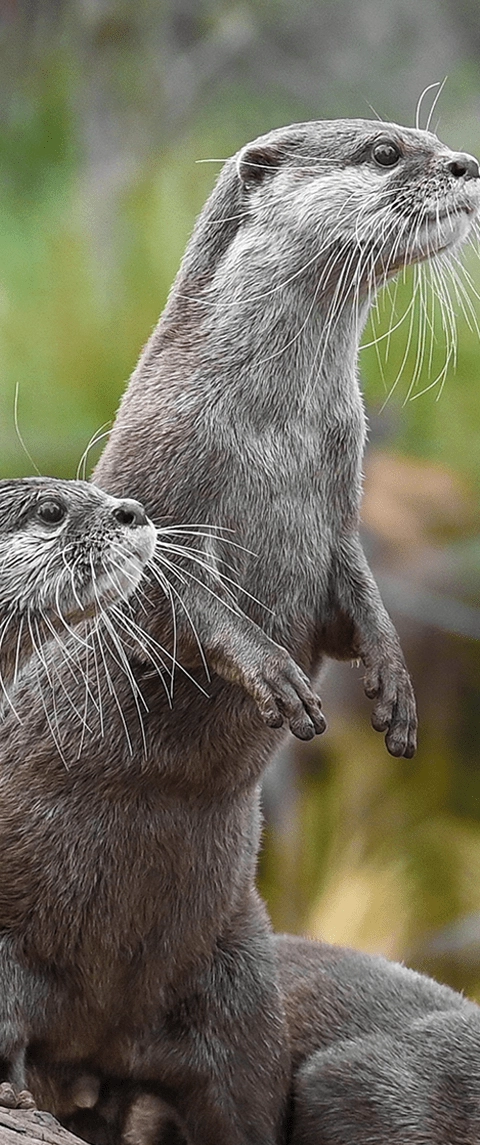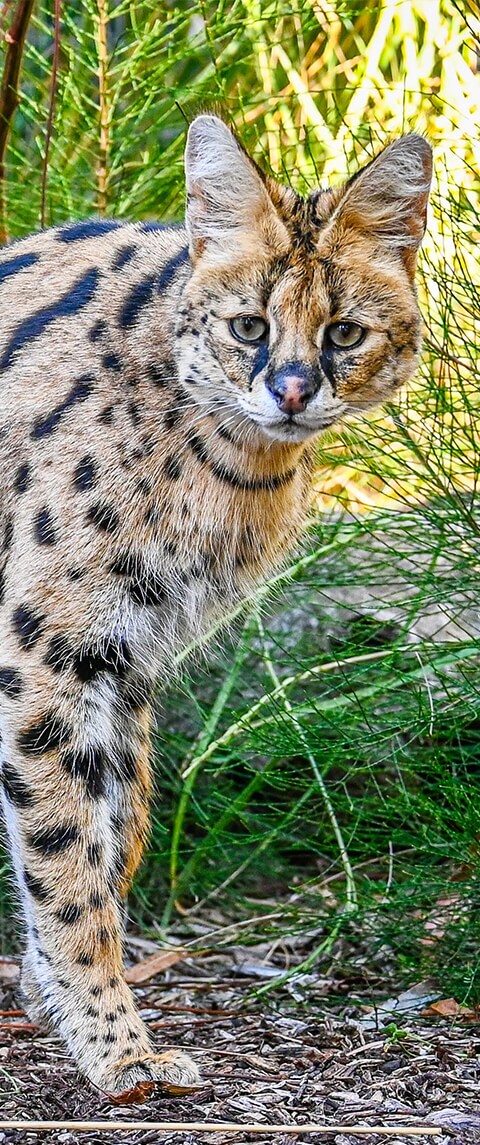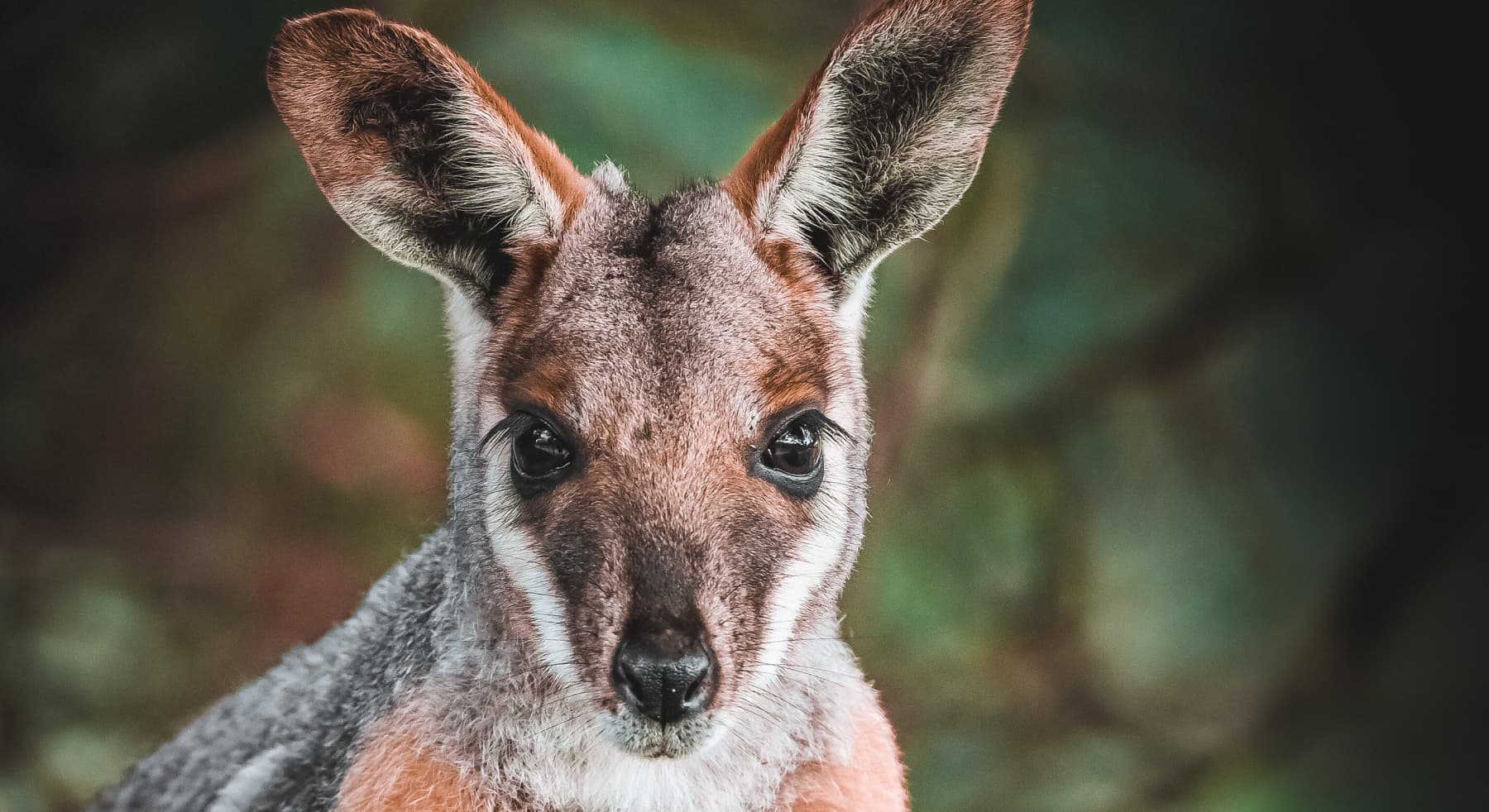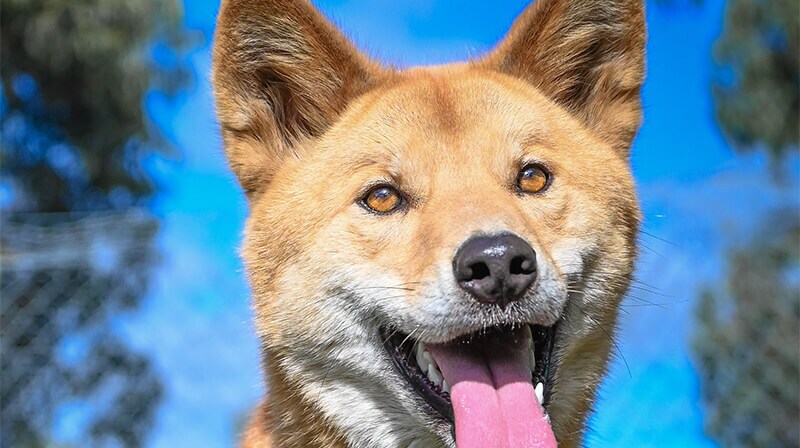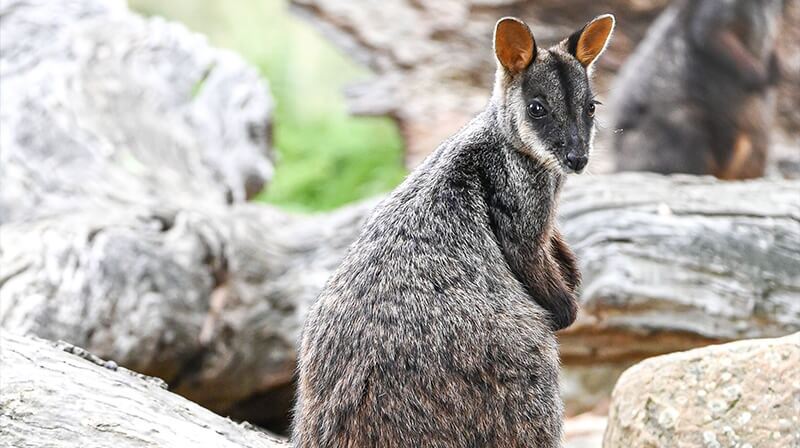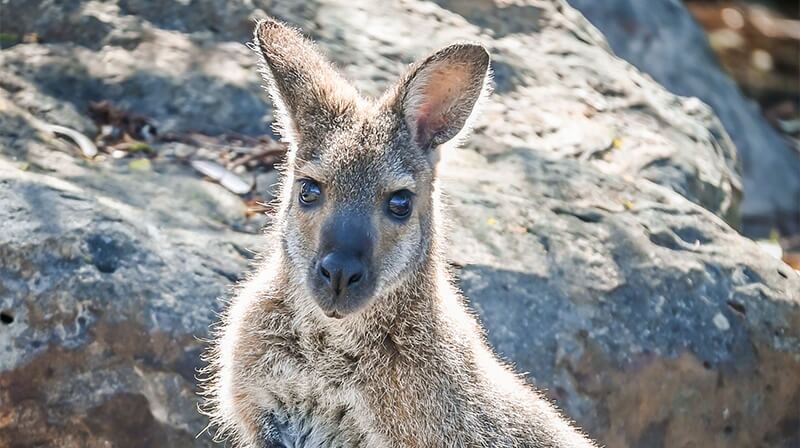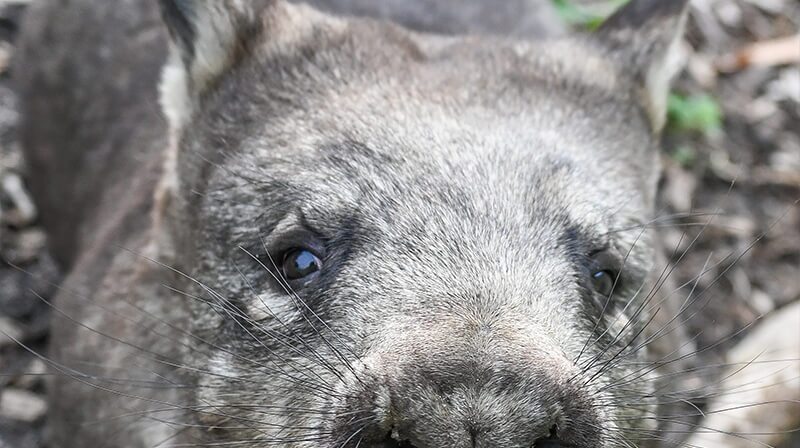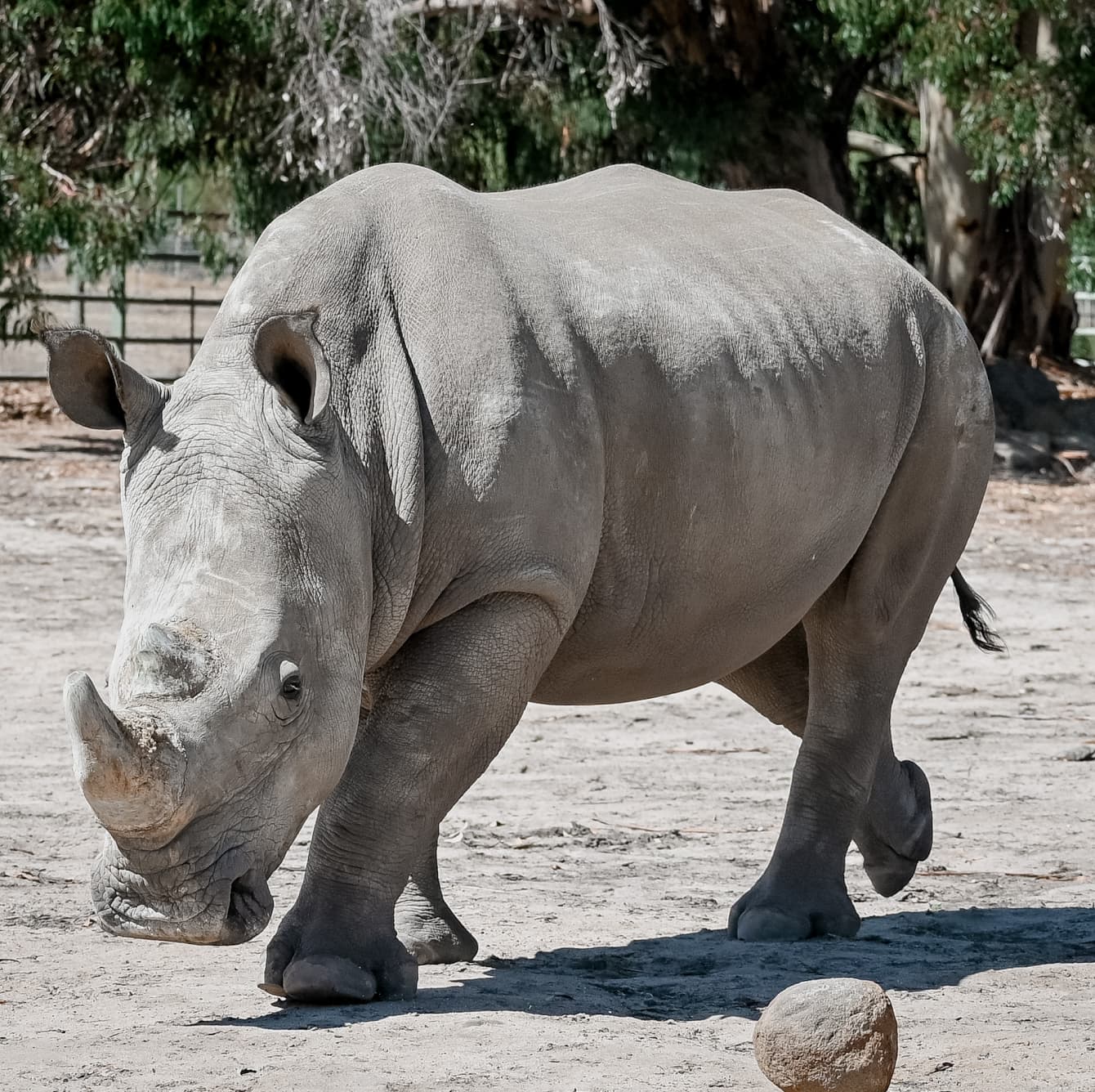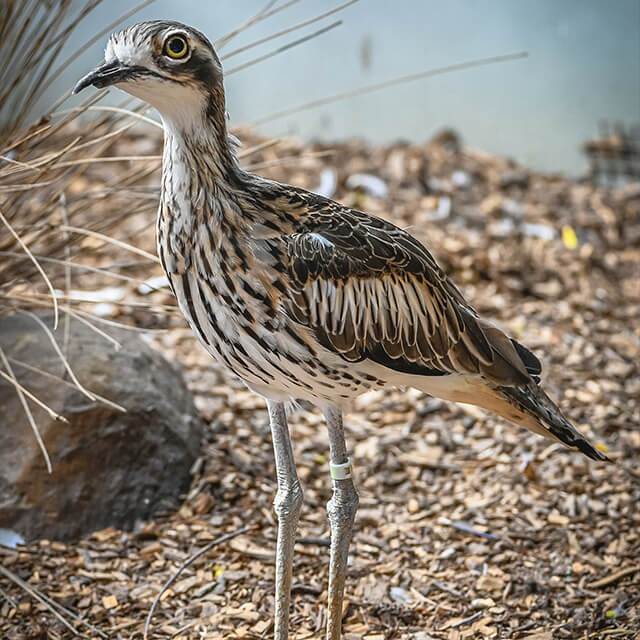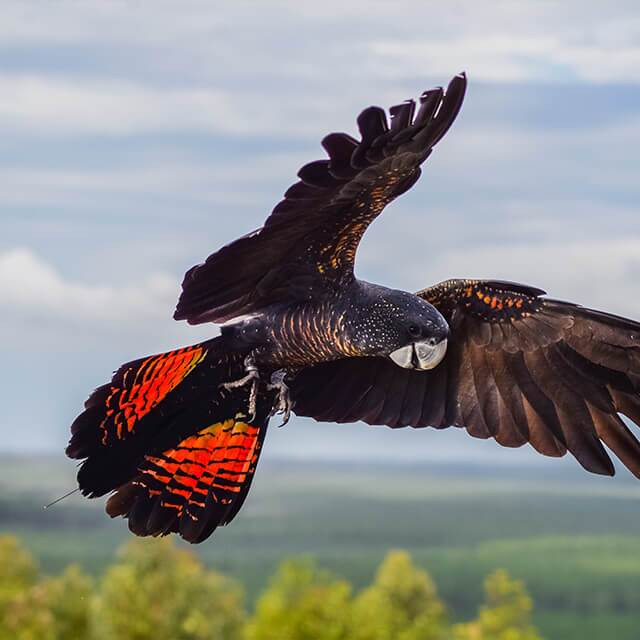Our dedicated keeping team spend their days providing the best possible care for our wildlife and are also responsible for the encounters. The animals listed below represent less than half of the zoo’s animal population but includes many of the favourites.
Caring for our Wildlife
Our dedicated keeping team spend their days providing the best possible care for our wildlife and are also responsible for the encounters. Our animal care philosophy is based on agreed standards and a focus on constantly improving these. These standards are usually based on the husbandry standards from the Zoo and Aquarium Association and include the provision of enrichment, training programmes and conditioning the animals to make managing them easier, to build the relationships between staff and wildlife and to reduce unnecessary stress. Our enclosures are generally large and naturally landscaped. We seek and receive advice from the likes of Werribee Open Range Zoo and many of the regional zoos which includes advice on both veterinary and animal keeping standards. We do not have our own veterinary staff but rely on the keeping team to monitor and report health concerns on a daily basis, which we then discuss with our consultant vets as needed. Some preventative veterinary care such as parasite control is implemented by our keepers on the advise of our consulting vets.
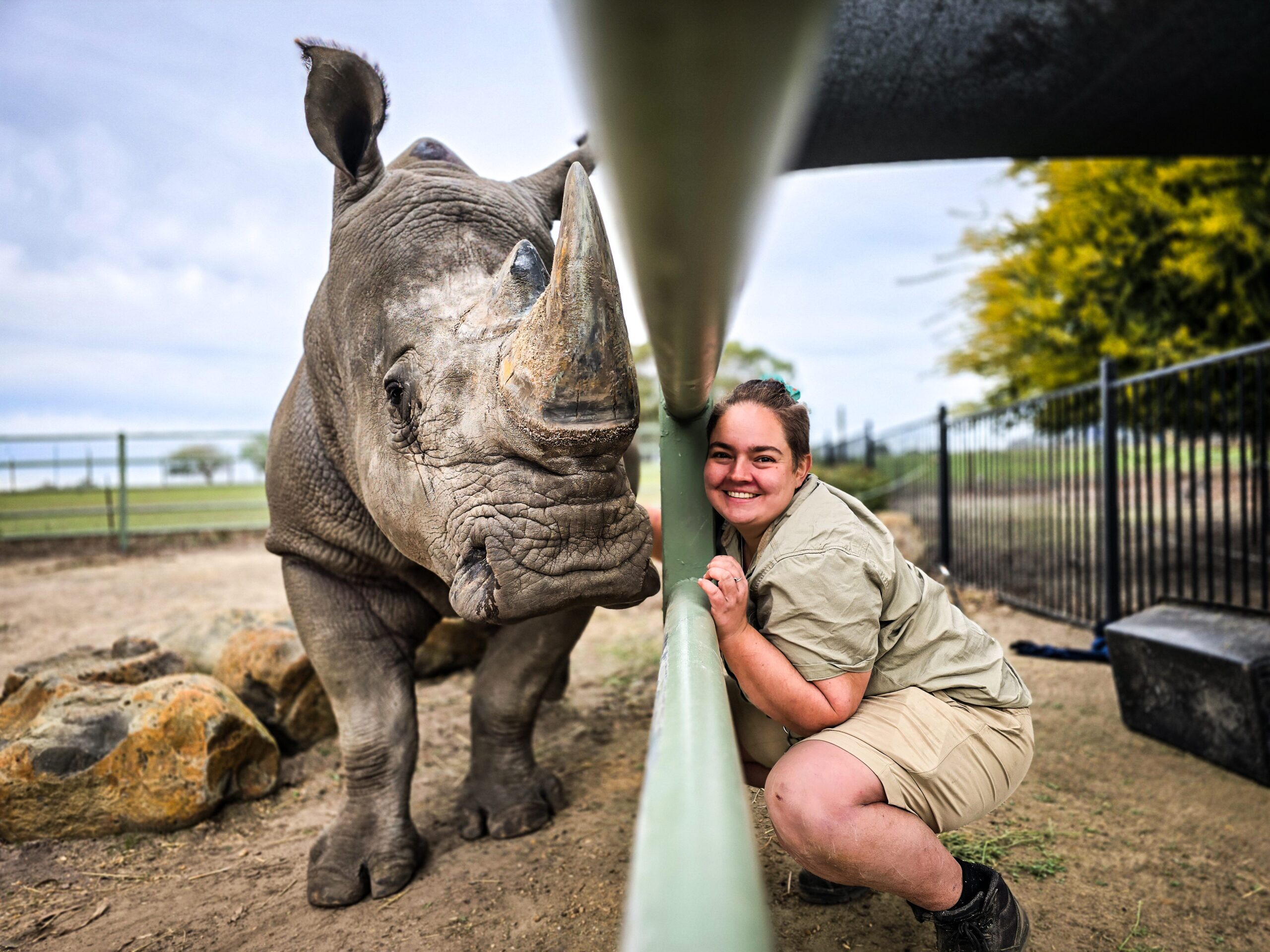

As part of the essential dietary requirements and enrichment we have a staff member who cuts browse three days per week. This browse supplies key nutrition for browsers such as giraffe, enrichment and some food for the likes of primates and parrots. As well as this we plan and commit to key exhibit upgrades to improve animal welfare each year. The latest has been a spend of over $100,000 on the giraffe paddock substrate, and larger new enclosures for our salt-water crocodile and pig-nosed turtle. Next we are turning our focus to larger enclosures and dens for our breeding group of capuchin monkeys followed by upgrade for our wombats.
Cheetah Training
As part of building a trusting relationship with our cheetah boys, which makes managing the boys easier and stress free, our team have worked wonders with the training program. The video provides an insight into how this achieved and if you want to see it in action, consider booking the cheetah encounter.
Rhino Training
Ever wondered how our keepers manage a three to rhino to move where and when asked and to participate in voluntary health checks? The answer is a training program that is a win-win for the rhino and the keepers. This focusses on building trust and ensuring the rhino finds the training rewarding while presenting the right behaviours to make their management easy.
The video provides an insight into how this achieved and if you want to see it in action, consider booking the rhino encounter.
Capuchin Training
Primates are highly intelligent and if not managed correctly they can become unruly to both the keepers and each other. By using a consistent training program our keepers build a trusting relationship that enables them to manage the troops in a stress-free environment. The training also enables ease of health care and even the ability to move the animals with ease. The video provides an insight into how the keepers achieve some of the trained behaviours and if you lucky you may even catch a keeper in action while training is underway.


Follow us @hallsgapzoo
Thank You for Hopping By!
A huge THANK YOU to everyone who joined us for our Easter Bunny Hunt at the zoo! It was great to see so many smiling faces and families enjoying the day together. Your enthusiasm made the event extra special!
The total count of bunnies hidden around the zoo was 26, did you find them all?
We hope you had as much fun finding bunnies as we did hiding them.
#hallsgapzoo #easter #visitmelbourne #grampians

Happy Easter from all of us at the Zoo.
We’re sending warm wishes your way for a day filled with love, laughter, and maybe a few bunny hops!
Enjoy the sweet treats and some wild moments with the ones you love.
Our animals clearly had fun with some Easter themed enrichment.
#grampians #grampiansvictoria #visitmelbourne #longweekend #Easterhunt #easterbunny #visitmelbourneaustralia #zoo

Don’t forget our Easter Bunny Hunt is on all weekend!
Keep an eye out, count all the bunnies you see and put your guess in our raffle box that will be drawn at 3.30pm everyday.
Make sure to follow our social media pages to find out the correct answer on Tuesday.
Here is a little hint to get you started:
“The bunny’s journey has just begun,
Snuggling close with more than one.
Fluffy friends with button eyes,
That’s where the first surprise lies!”
#Easterhunt #easterbunny #longweekend #grampians #visitmelbourne #visitmelbourneaustralia

✨✨✨FAST FACT FRIDAY✨✨✨
These little legends love hanging out motionless on tree trunks like it’s a full-time job. They’re not fire-breathing, but they do give serious “forest guardian” vibes and they will judge you silently from a branch…
BOYD’S FOREST DRAGON
They are quite different compared to other reptiles in the fact they do not rely on basking in the sun to regulate their body temperature.
Babies are independent straight after they hatch from the eggs.
They are masters of camouflage and use this to protect themselves from predators.
They are native to rainforests in northeastern Australia with the Daintree rainforest being a good place to try and spot them.
#grampians #schoolholidays #easter #nationalpark #hallsgapzoo #zoo #boydsforestdragon

This Easter on all 4 days we’re turning the zoo into a bunny-filled adventure! Count all the hidden bunnies scattered throughout the zoo for your chance to WIN an exclusive Lizard or Dingo encounter *conditions apply.
#hallsgapzoo #easter #schoolholidays

🎉🎉 We are OPEN every day this weekend 10am-5pm so hop on over to the zoo for some Easter fun! 🎉 🎉
We are celebrating with some Egg-stra special activities, lots of encounters, keeper talks, our food van is open and our keepers can’t wait to share some Easter fun with the animals.
Stay tuned for details of our Easter themed activity with a prize that we have planned for each day of the long weekend.
Don’t forget to pre-book encounters to avoid disappointment.
#hallsgapzoo #grampians #schoolholidays #grampiansnationalpark #visitmelbourne #longweekend

✨✨✨ FAST FACT FRIDAY✨✨✨
Today is all about Red Pandas
🍁 Red Pandas are not related to Giant pandas.
🍁They are classed as a carnivore even though their diet mainly consists of bamboo.
🍁 They are an arboreal species meaning they live up in the trees and they rely on the trees for camouflage to protect them from predators.
If you want to see just how cute they are in person now is your chance, you can get up close with our 2 red pandas as you feed them some tasty treats they will walk over you lap and pose for a photo with a paw on your shoulder.
Book an encounter by visiting our website
#hallsgapzoo #visitmelbourne #grampians
#grampiansnationalpark #redpanda #schoolholidays

✨✨✨FAST FACT FRIDAY✨✨✨
Today we are looking at the Southern White Rhino:
🦏 Their horns are continually growing and is made from keratin just like our hair and nails.
🦏 They are grazers
🦏They can run up to 40kmh per hour
🦏 They weigh up to 2700kgs and babies are born weighing around 60kgs
Photo of the handsome Kapamba celebrating his 29th birthday with some presents. #grampians #nationalpark #visitmelbourneaustralia

Today is also International Tasmanian Devil Day.
We have 3 devils here at Halls Gap Zoo and you may see our new boys Messi and Knuckles out exploring their enclosure or Arti next door trying to suss out what the new boys are up to.
Messi and knuckles came from Aussie Ark who do an amazing job of breeding Tassie devils to help conserve this endangered species. In the wild devil populations have significantly reduced due to the Devil facial tumour disease, it is unfortunately a contagious cancer which is spread when they interact with each other primarily through biting but through breeding programs like Aussie Arks we are able to breed animals that are tumour free and have a healthy population of devils to conserve the species while scientists work on how to stop the disease spreading.
📸 keeper Darci

🐊🐊NEW ENCOUNTER🐊🐊 We are very excited to announce that we are now offering crocodile encounters where you can enter the croc pool and have a ride on Jugs. Some might say this is a once in a lifetime opportunity. Don’t worry we have safety at the forefront of our minds so riders must leave phones, jewellery, shoes and hats outside as to not give jugs a stomach ache.
Everyone gets to watch and at the same time we will also have one of our keepers doing a croc feed talk at the front of the exhibit.
Jugs can’t wait to meat you all!

Summer is over and we can slowly start to relax a little bit after such a stressful few months with the fires in the Grampians impacting the wildlife, the residents, visitors and all the surrounding businesses.
Now that the school holidays are almost here there is no better time to visit to show your support to the whole community the fires are gone the weather is beautiful the gift shop is stocked and all the animals are ready to welcome everyone for a busy school holidays we have lots planned from keeper talks, new encounters, Easter fun and even some animal birthday parties planned so lock in a date for a day trip or better yet come stay for a few nights to really soak in the Grampians and go on a hike, eat some ice cream, let someone else cook and clean the dishes for you and relax with a nice walk around the Zoo and book in to meet our friendly animals for an encounter you will remember-even the kids will go back to school remembering the meerkat they fed or the rhino they got to pat instead of telling their teacher they had McDonald’s for lunch one day.
Pre book for encounters via our website
Check out Parks Victoria website for hikes that are open within the National Park

✨✨✨FAST FACT FRIDAY✨✨✨
Today is all about the beautiful Emperor Tamarins 🥰
🐒 Females will usually give birth to twins and the whole family participate in raising the babies, they will carry them on their backs and pass them back to mum for a feed.
🐒 They live in family groups of around 15 animals
🐒 They have claws rather than nails and this adaptation allows them to cling to the trees
🐒Remember Monkeys are not pets and interacting with ‘cute’ monkey videos on social media contributes to the illegal pet trade.

🌟🌟Come and meet our baby wombat Sprout before he is wheeled away to his new home 🥹
Sprout is our very loveable and cheeky wombat and during an encounter you will get to pat him, watch him get the zoomies, take him for a little walk (unless the grass is especially delicious that day) and learn facts about all wombats and the 4 that call Halls Gap Zoo home. 🌟🌟
🔥 We are currently taking bookings till the end of school holidays.




